Archaeologists excavating an ancient tomb in Chifeng, China have unearthed a dragon figurine made of jade that's linked to the Neolithic Hongshan culture.
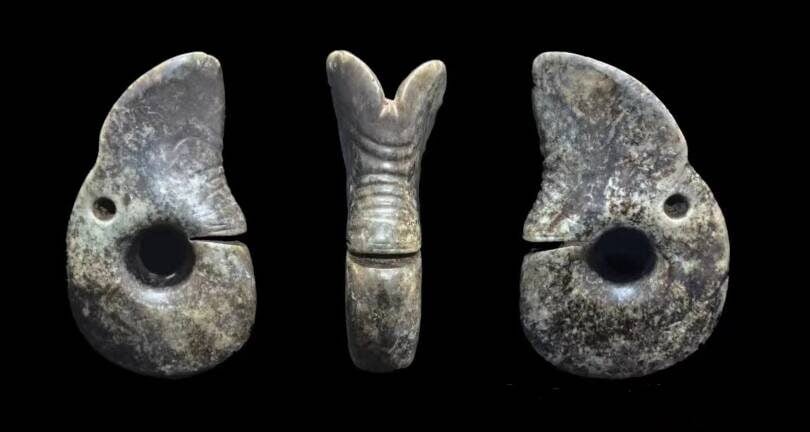
XinhuaThe ancient dragon figurine made of jade that was uncovered in northern China.
Archaeologists in Chifeng, China, have excavated an ancient tomb belonging to the Neolithic Hongshan culture that dates back 5,000 years. The Hongshan people, known for their impressive jade and clay sculptures, often created pieces representing “pig-faced” dragons and other symbolic creatures.
The highlight of the excavation was the discovery of one of these jade dragon figurines. Described as the largest jade dragon ever unearthed from the Hongshan culture, this artifact exemplifies the culture’s impressive craftsmanship.
Furthermore, the team also found other relics, including painted pottery basins, tripod-shaped cups, and human remains, revealing more information about the rituals and daily life of the Hongshan people.
Archaeologists In China Uncover An Ancient Tomb From The Hongshan Culture
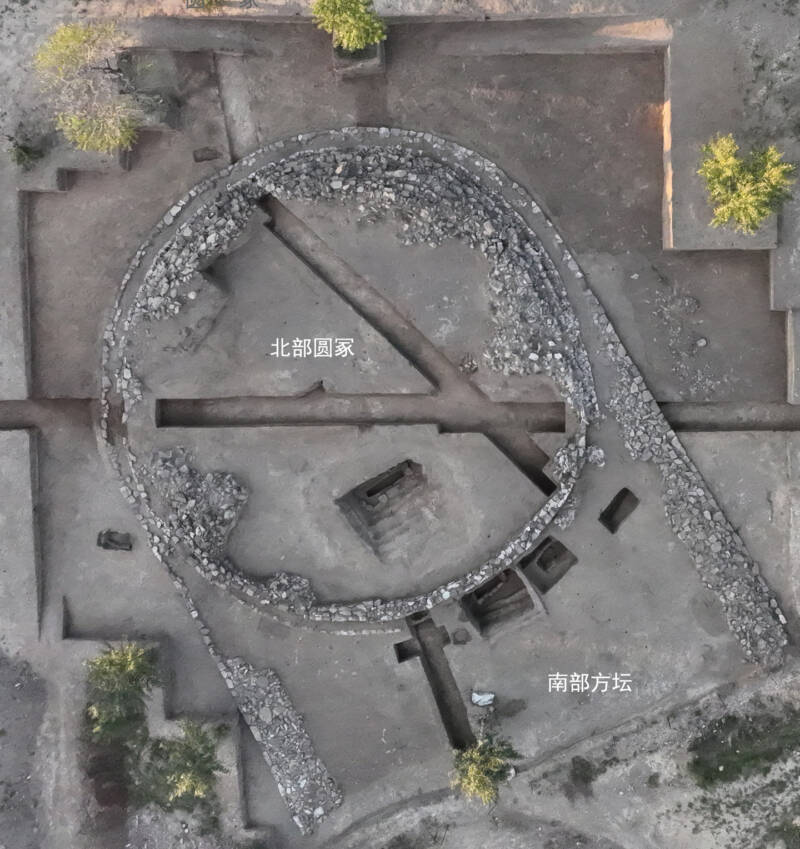
XinhuaA view of the tomb site near the city of Chifeng, China where the jade dragon was found.
Recently, archaeologists in Chifeng, China, a city within the Inner Mongolia Autonomous Region, excavated an archaeological site linked to the Neolithic Hongshan culture.
This group occupied areas of China’s West Liao river basin as far back as 4,700 B.C.E. First discovered in 1908, Hongshan archaeological sites have been extensively researched for decades. So far, researchers have connected them with the creation of impressive jade and clay sculptures, especially those depicting “pig-faced” dragons.
This most recent excavation was meant to research what the region’s ancient environment looked like during the time of the Hongshan and involved large-scale topographic mapping and carbon dating. The team discovered that the site featured both a circular tomb in the north and a square altar in the south — the only one of its kind in the region.
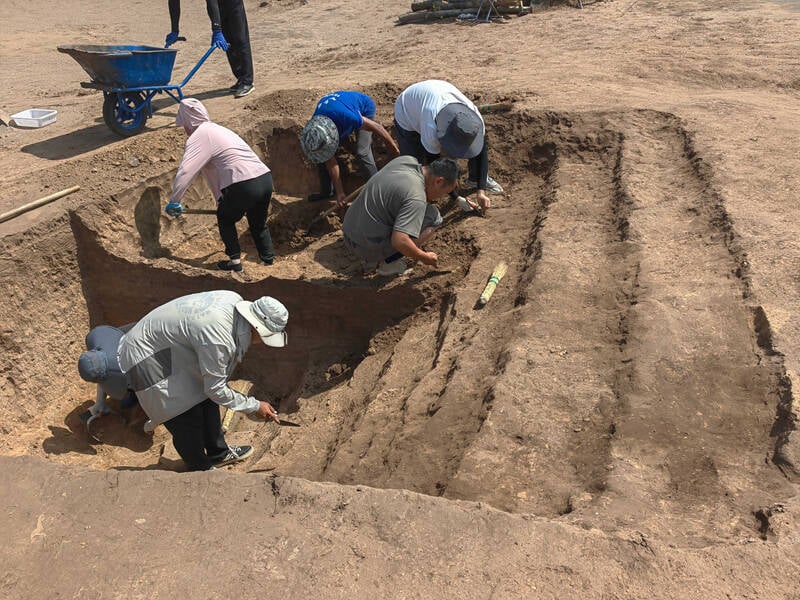
XinhuaArchaeologists work to excavate the square altar that was found in the tomb.
While gleaning important geological information from the site, the research team also uncovered more relics from the Hongshan culture, including their iconic jade dragon figurines as well as other pottery.
The Jade Dragon And Other Relics Found At The Chifeng Tomb
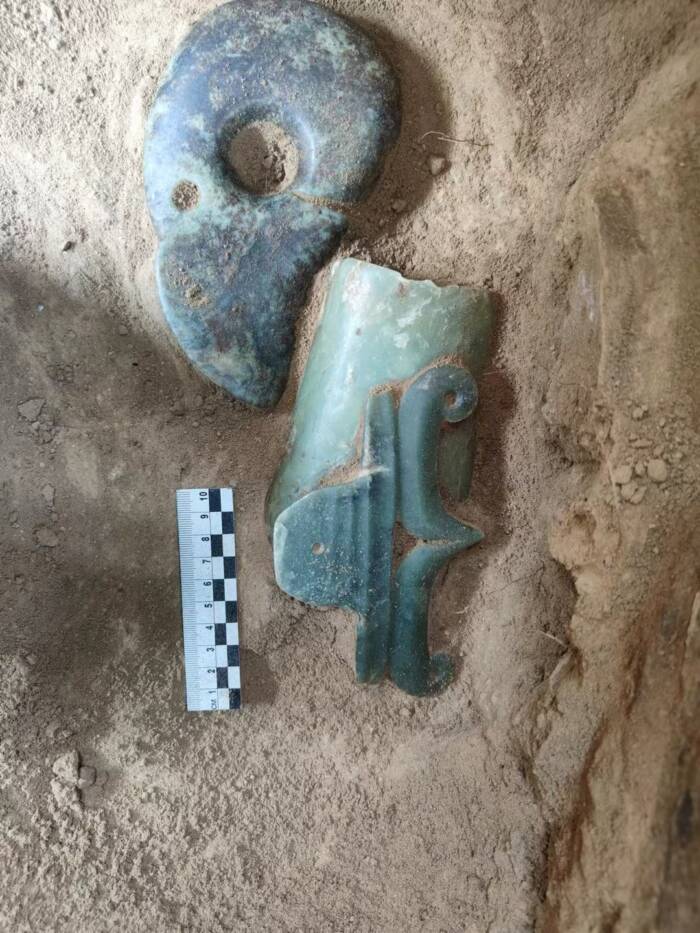
XinhuaThe jade dragon, whose meaning and purpose remain mysterious, that was discovered at the tomb in Chifeng, China.
During their excavations, researchers were stunned to find one of the Hongshan culture’s most iconic works: a jade dragon.
The artifact measured just over six inches long, roughly four inches wide, and about one inch thick.
This carving is the “largest jade dragon ever discovered from the Hongshan culture,” the State Council of the People’s Republic of China stated in a Xinhua news release.
The research team also recovered human remains from the tomb alongside fire pits, other jade artifacts, painted pottery basins, and tripod-shaped pottery cups — but their most impressive finding remains the jade dragon.
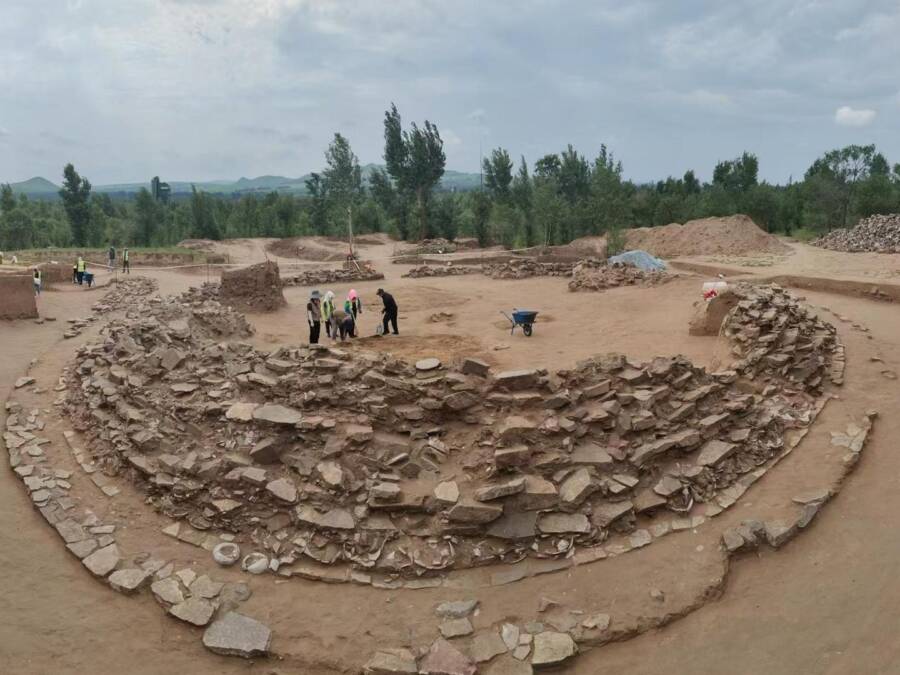
XinhuaThe circular tomb in Inner Mongolia where the jade dragon was unearthed.
However, some experts disagree about whether the jade dragon is a dragon at all. Gideon Shelach-Lavi, a professor of East Asian Studies at The Hebrew University of Jerusalem and former researcher in Chifeng, told Live Science that while the artifact was “very nice it is not that unique.”
“We do not really know what their meaning was during the Neolithic period so calling them ‘dragons’ is anachronistic,” Shelach-Lavi stated. Shelach-Lavi also emphasized that jade dragon artifacts of similar size have been discovered at other tombs belonging to the Hongshan culture.
Despite the debate, it is clear that this site in Chifeng is significant. Rather than a simple burial site, it is a ritualistic structure attesting to the sophistication of the Hongshan culture thousands of years ago.
After reading about the jade dragon, dive into 33 China facts that will blow your mind. Then, read the true story of Qin Shi Huang, China’s first emperor and the ruler responsible for commissioning the Terracotta Army.





